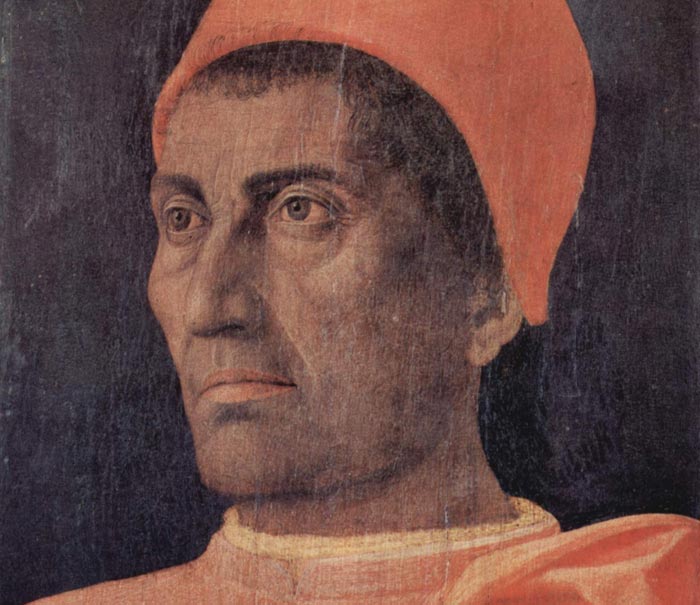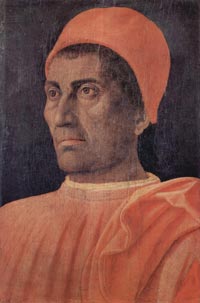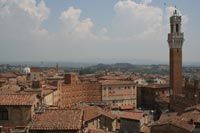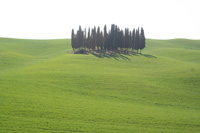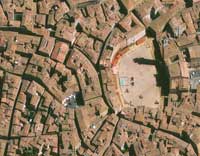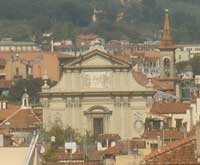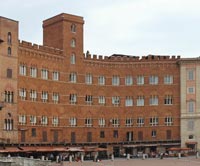Andrea Mantegna | Portrait of Carlo de' Medici |
| The Portrait of Carlo de' Medici is a painting by the Italian Renaissance master Andrea Mantegna, executed in 1466. It is now housed in the Uffizi Gallery of Florence. |
History |
||
| Little is known about the painting's origins, and currently the most credited hypothesis is that it would portray Carlo de' Medici, an illegitimate son of Cosimo de' Medici the Elder and a Circassian concubine, as hinted by the subject's dark skin color. In 1912 a copy of the portrait was included in a genealogy of the House of Medici. This is however in contrast with the identification of Carlo as a character in Filippino Lippi's Stories of St. Stephen and St. John the Baptist in the Cathedral of Prato. Also the attribution to Mantegna was not immediate, as for a long time the painting was thought to be by Domenico Veneziano. The work has been dated from 1459–1460, when Mantegna arrived in Mantua and was commissioned numerous official portraits (the subject has been also identified as Ludovico Gonzaga, bishop of Mantua), and 1466, when the painter perhaps travelled to Florence. Description The painting shows the subject from a three-quarter view, an innovation brought in Italy through Flemish masters in the late 15th century; previously profiles, in the ancient Roman tradition, were preferred. The subject is dark-skinned and wears the garments of a protonotary apostolic, a position which Carlo held from 1463. The official nature of the painting explains the absence of any psychological element and the attention to details such as the dress and the hat.
|
[1] Sources: Pauli, Tatjana (2001). Mantegna. Milan: Leonardo Arte. Biography Andrea Mantegna (1431-1506) was one of the foremost north Italian painters of the 15th century. A master of perspective and foreshortening, he made important contributions to the compositional techniques of Renaissance painting. Tatjana Pauli, Mantegna, serie Art Book, Leonardo Arte, Milano 2001. ISBN 9788883101878 |
||||
|
||||
|
This article incorporates material from the Wikipedia articles Andrea Mantegna and Portrait of Carlo de' Medici, published under the GNU Free Documentation License. |
||||
Holiday homes in the Tuscan Maremma | Podere Santa Pia |
||||
Siena |
Podere Santa Pia |
Podere Santa Pia, garden |
||
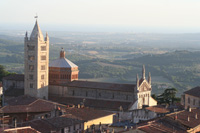 |
||||
Val d'Orcia" tra Montalcino Pienza e San Quirico d’Orcia. |
Siena, Piazza del Campo |
Massa Marittima |
||
San Marco a Firenze |
Siena, Palazzo Sansedoni |
Firenze, Duomo |
||

